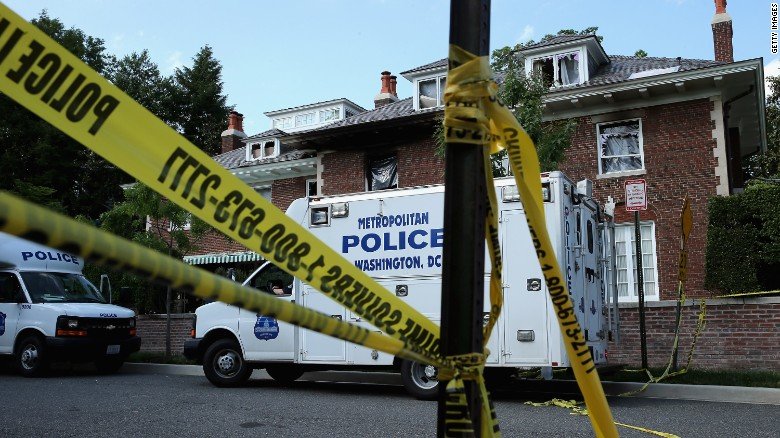The District's homicide rate spiked dramatically this year, and officials say there's no single reason for the increase.
As of Wednesday, the Metropolitan Police Department reported 162 homicides in 2015 — a 54 percent increase over last year, despite overall crime being down 4 percent. There were 105 murders last year, 104 in 2013 and 88 in 2012.
The last time the District saw a homicide rate as high as this year's was 2008, when police recorded 186 homicides. Most of this year's homicides — 119 — occurred in the 5th, 6th and 7th Police Districts, which correspond to Wards 5, 7 and 8. Assistant Police Chief Peter Newsham says several factors account for the jump in homicides, including a pattern of repeat offenders and more guns on the streets.
Comment: The problem is more than repeat offenders and people having more guns. The U.S. has a culture of violence. It is displayed in all forms of media and it is not accidental.
Liars, Gun Control and Money in a Culture of Violence
"A greater percent of those arrested for homicide have prior convictions for felony violent crimes," ChiefNewsham told The Washington Times. "And a lot of times more than one gun was represented at the crime scene. The means either there were two shooters and one victim, or those involved were shooting at each other."
Chief Newsham said officers have found more shell casings at crime scenes, which means that shooters could be using guns with modified magazines that turn a standard pistol into a firearm with up to 40 rounds. When more shots are taken, there is a higher likelihood of someone dying, he said, adding that cases that could have been deemed assault with a deadly weapon quickly turn into homicides.
Mayor Muriel Bowser has been aware of the increase in homicides since May, and has been getting detailed weekly reports since then, according to Deputy Mayor for Public Safety Kevin Donahue. "We've been following it closely and asking ourselves why it happened," Mr. Donahue said. "Something has changed in 2015."
Comment: People in the U.S. are more fearful, angry and divided.
Mass shootings and gun control in the U.S.: The problem is not gun laws, but a society dripping in fear, insecurity, anger and violence
Other cities have seen similar increases in murder this year. Baltimore has seen a 63 percent increase, with homicides rising from 208 in 2014 to 338 this year.
To try to quell the surge in homicides, Mr. Donahue said,MPD and the D.C. Department of Human Services are sharing information to more quickly help families affected by the killings.
In May, Human Services and MPD identified five police service areas that have historically been hit hardest by violence and offered housing, employment and behavioral health services to those families affected by violent crime.
"There has been a much more intense effort on the part of DHS to think of themselves as helping bring down homicide rates," Mr. Donahue said.
The five neighborhoods who have been receiving extra help from Human Services include Carver Langston and Lincoln Heights in Northeast as well as Benning Terrace, Woodland Terrace and Congress Park in Southeast.
Chief Newsham said the program partnering with Human Services is working and has even helped solve a few homicides this year.
"The impact has been subtle and hard for public to see, but when you go out with those types of services and offer them to families you get more information," Chief Newsham said.
It also show residents of crime ridden areas that police and government are there to help them and haven't abandoned them, he said.
MPD waits until the year has ended to release homicide closure rates, but Chief Newsham said this year's closure rate is lower, mostly due to the increase in homicides.




Comment: See also: The number one driver of gun sales in America